
"What is the most water-soluble dietary fiber in dietary fiber?"
"What is the role of water-soluble dietary fiber?"
"Water-soluble dietary fiber" How many types are there? "
The word dietary fiber is being heard more and more, but it seems that some people know the details and are not sure.
I used to be the same.
I somehow knew that dietary fiber was good for my health, but I didn't really understand the future.
This time, we will focus on water-soluble dietary fiber among such dietary fibers, and tell you about the function and types of water-soluble dietary fiber and foods that contain a lot of it.
If you read it to the end, you can become a water-soluble dietary fiber master, so please read it!
What is dietary fiber?
First, before explaining the water-soluble dietary fiber, I will briefly explain the dietary fiber itself.
Dietary fiber is a component contained in food, and is a component that cannot be decomposed by human digestive enzymes (indigestible).
Proteins, lipids, carbohydrates, etc. are decomposed by digestive enzymes such as saliva in the mouth, esophagus, and stomach, and are absorbed into the body from the small intestine.
However, dietary fiber is not broken down by these digestive enzymes and passes through the small intestine to reach the large intestine.
Most of the dietary fiber is complex saccharide (polysaccharide) in carbohydrates, and it is not digested, so it is not energy.
It used to be meaningless because it does not function as an energy source, but now it is attracting attention as the sixth nutrient next to the five major nutrients. ..
The standard daily intake of dietary fiber is 20 g or more for adult men and 18 g or more per day for adult females.
There are two main types of dietary fiber: water-soluble dietary fiber and insoluble dietary fiber.
Recently, attention has been focused on water-soluble dietary fiber among the two types of dietary fiber, so let's take a closer look at water-soluble dietary fiber.
Water-soluble dietary fiber is, as the name implies, dietary fiber that is soluble in water .
When you hear the word "dietary fiber", it is "fiber" so it is intertwined, and you may have the image that it is lumpy when you eat it.
Such dietary fiber that we feel fiber when we eat is insoluble fiber.
On the other hand, since water-soluble dietary fiber is dissolved in water, it has slimy and smooth characteristics .
There are three main types of water-soluble dietary fiber.
Dietary fiber is not absorbed in the stomach or small intestine and reaches the large intestine, which is rich in intestinal bacteria.
The good bacteria that live in the large intestine feed on sugar.
Therefore, dietary fiber, which is made up of complex sugars, becomes food for good bacteria.
Most of the dietary fiber that feeds good bacteria is water-soluble dietary fiber.
When good bacteria become healthy in the intestine (mainly the large intestine), it prevents the growth of bad bacteria.
It is known that there are 60 to 70% of immune cells in the intestine that protect our body.
In an environment where good bacteria predominate, those immune cells can work normally, so the immune system is improved, the onset of colds, allergies, rough skin, etc. is suppressed, and you can stay healthy. >
Water-soluble dietary fiber also dissolves in the poop that is made.
The slimy and smooth texture of water-soluble dietary fiber softens the poop.
Therefore, If you are suffering from constipation, it is recommended to be aware of foods with a lot of water-soluble dietary fiber .
Water-soluble dietary fiber slows down the digestion and absorption of other nutrients in the small intestine, thereby suppressing the rapid rise in blood glucose levels after meals .
In addition, water-soluble dietary fiber adsorbs cholesterol and excretes it from the body, thereby lowering the cholesterol level in the blood .
Next, I will tell you about the types of water-soluble dietary fiber in three stages.
First of all, I would like to introduce a typical example of water-soluble dietary fiber.
Pectin is a water-soluble food of (a complex sugar that reaches the large intestine), which is a natural polysaccharide contained in fruits such as apples, lemons, and oranges, and vegetables such as carrots, cabbage, and radish. It is a fiber.
In addition to the role of dietary fiber, pectin extracted from apple skin is also used for jams and ice cream as a role to fix the liquid in a jelly shape and to maintain the shape of food. ..
Mainly Konjac potato is a polysaccharide water-soluble dietary fiber that is abundantly contained.
Glucomannan absorbs water in the stomach and swells dozens of times, so it is also used as a diet food.
Alginic acid is a water-soluble dietary fiber that is a polysaccharide that is abundant in Konbuyawakame .
Next, dietary fiber became known as the sixth nutrient, and when such dietary fiber became the food for the good bacteria of the intestinal bacteria, it came to be noticed, and the water-soluble dietary fiber that began to be known was introduced. To do.
Inulin is a water-soluble dietary fiber of polysaccharides made by plants.
It is a kind of carbohydrate, but unlike starch, it reaches the large intestine without being absorbed in the stomach and small intestine, and becomes a food for intestinal bacteria. Therefore, it is displayed as dietary fiber instead of sugar in the nutrition label.
Inulin is abundant in burdock, garlic, onions , etc.
Inulin is used as a food product in place of sugar, fat and flour for nutritional reasons.
β-Glucan is a water-soluble dietary fiber that is a polysaccharide that is abundant in mushrooms and barley.
Among β-glucans, oats, barley, wheat, rye -derived grains β-glucan and shiitake mushrooms, maitake mushrooms and other mushrooms Glucan, Beta-glucan of seaweed centered on konbu, etc.
Agarose is a water-soluble dietary fiber of polysaccharides and is a major component of agar .
Most of the agar is made of agarose, and its content exceeds 80%.
If you know the last three water-soluble dietary fibers, you can say that you are a water-soluble dietary fiber master.
Polydextrose is an artificially synthesized water-soluble dietary fiber made from glucose, sorbitol, and citric acid.
It is a food additive originally developed for the purpose of preventing obesity.
Polydextrose is smooth and has almost no viscosity, and it does not become a substrate for oral bacteria, so it is less likely to cause tooth decay.
It is tasteless, odorless and has no sweetness, so it can be seasoned freely.
Indigestible dextrin is a kind of water-soluble dietary fiber contained in ripe fruits, but nowadays, indigestible dextrin made from corn starch is distributed to make up for the lack of dietary fiber. doing.
In the streets, indigestible dextrin is called " indigestible dextrin ".
The background to the development of artificial indigestible dextrin is that dietary fiber tends to be deficient due to the westernization of Japanese food.
Indigestible dextrin, like polydextrose, is easily dissolved in water and is smooth and has almost no viscosity.
Oligosaccharides are digestible oligosaccharides that are easily decomposed by human digestive enzymes and are not easily used as food for good bacteria in the large intestine, and good bacteria that reach the large intestine without being decomposed in the stomach and small intestine. There are two types of indigestible oligosaccharides that can be used as food.
Typical examples of indigestible oligosaccharides are fructooligosaccharides, galactooligosaccharides, soybean oligosaccharides, raffinose, and xylooligosaccharides.
Next, I will tell you about foods that contain a lot of water-soluble dietary fiber in "cereals", "beans", "vegetables", "fruits", "mushrooms", and "seaweeds" .
In addition, the display is displayed as the amount of dietary fiber in 100g.
When cooking white rice, it is recommended to add 100g of barley to 2 go of white rice.
Reference How to cook 30% pressed barley rice How to make and recipe | Krasil
I introduced soybeans and natto, but beans (peas, chick beans, and kidney beans) contain more water-soluble dietary fiber and insoluble dietary fiber than other foods. >
According to the food nutritional study on the dietary fiber of seaweed, it is shown as follows.
There is also an article written in ranking format, so please take a look.
Finally, I would like to tell you three important things for effective and correct intake of water-soluble dietary fiber.
This article is about water-soluble dietary fiber, but some dietary fiber is called insoluble dietary fiber.
There is no good or bad because water-soluble dietary fiber and insoluble dietary fiber have their own characteristics.
Therefore, it is important to take water-soluble and insoluble in a well-balanced manner in combination with various foods, rather than taking one of them in a biased manner.
Ideal is to eat so that water-soluble dietary fiber: insoluble dietary fiber = 1: 2 .
In order to efficiently ingest water-soluble dietary fiber, it is important to eat a lot of foods, but it is also important to eat raw, grilled, or boiled . It will be
In the case of vegetables You cannot eat more raw vegetables than you think.
Therefore, it is recommended to eat it as a soup such as soup or miso soup .
This time, I would like to tell you the most important thing at the end.
Water-soluble dietary fiber is also a beneficial ingredient in our body.
However, We do not recommend eating in such a way that it is bound only by the content of water-soluble dietary fiber .
Because if you are pursuing only the ingredients, a supplement containing a lot of dietary fiber may be used.
In addition to dietary fiber, it is a vegetable that contains various ingredients that support our health, such as vitamins, minerals, and amino acids.
For example, Shallot contains the most water-soluble dietary fiber, but it also contains vitamin Bs, folic acid, vitamin C, etc. in addition to dietary fiber.
I also wrote an article saying that it is better to eat the whole vegetables instead of eating the ingredients of the vegetables, so please take a look if you like.
Eating is not just about nutrition.
New encounters often start with meals, and daily worries may be resolved at lunch parties with friends.
Eating is important in terms of communication.
By knowing vegetables with a lot of water-soluble dietary fiber, you can have a healthy diet, and by sharing it with your friends as a little knowledge, not only yourself but also the people around you. Can also be healthy.
Did you understand about water-soluble dietary fiber?
Water-soluble dietary fiber has the characteristic of being slimy and smooth, and is abundant in barley, burdock, natto, and okra.
It turned out that the balance of such water-soluble dietary fiber with insoluble dietary fiber is also important!
Let's aim for a healthy daily life by skillfully ingesting water-soluble dietary fiber that feeds good bacteria in the intestines! .
What is water-soluble dietary fiber?
What are the three functions?
① It becomes a food for good bacteria, prepares the intestinal environment, and prevents various diseases
② Soften the poop and improve defecation
③ Suppress the rapid rise in blood glucose level after meals
9 kinds of water-soluble dietary fiber
Three types you should know
❶ Pectin
❷ Glucomannan
❸ Sodium alginate
Three types of attention
❹ Inulin
❺ β-glucan
❻ Agarose
Three types of water-soluble dietary fiber master
❼ Polydextrose
❽ Indigestible dextrin
❾ Indigestible oligosaccharides
What foods are high in water-soluble dietary fiber?
Cereals
Barley (pressed barley): Total amount 9.6g ( Water-soluble dietary fiber: 6.0g , Insoluble dietary fiber: 3.6g)

Brown rice: Total amount 3.0g ( Water-soluble dietary fiber: 0.7g , Insoluble dietary fiber: 2.3g)

Beans
Soybeans: Total amount 17.1g ( Water-soluble dietary fiber: 1.8g , Insoluble dietary fiber: 15.3g)

Natto: Total amount 6.8g ( Water-soluble dietary fiber: 2.4g , Insoluble dietary fiber: 4.4g)

Vegetables
Shallot: Total amount 11.3g ( Water-soluble dietary fiber: 9.0g , Insoluble dietary fiber: 2.3g)

Burdock: Total amount 5.9g ( Water-soluble dietary fiber: 2.4g , Insoluble dietary fiber: 3.5g)

Moroheiya: Total amount 6.8g ( Water-soluble dietary fiber: 2.4g , Insoluble dietary fiber: 4.4g)
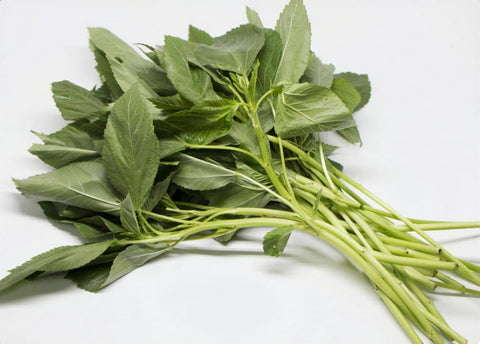
Okra: Total amount 5.0g ( Water-soluble dietary fiber: 1.7g , Insoluble dietary fiber: 3.3g)

Broccoli: Total amount 4.4g ( Water-soluble dietary fiber: 0.7g , Insoluble dietary fiber: 3.7g)

Kiriboshi daikon: Total amount 21.3g ( Water-soluble dietary fiber: 5.3g , Insoluble dietary fiber: 16.0g)

Fruits
Avocado: Total amount 5.3g ( Water-soluble dietary fiber: 1.7g , Insoluble dietary fiber: 3.6g)

Kiwifruit: Total amount 2.6g ( Water-soluble dietary fiber: 0.8g , Insoluble dietary fiber: 1.8g)

Strawberries: Total amount 1.3g ( Water-soluble dietary fiber: 0.5g , Insoluble dietary fiber: 0.8g)

Apples: Total amount 1.9g ( Water-soluble dietary fiber: 0.5g , Insoluble dietary fiber: 1.4g)

Mushroom
Nameko: Total amount 3.5g ( Water-soluble dietary fiber: 1.1g , Insoluble dietary fiber: 2.4g)

Shiitake mushrooms: Total amount 3.9g ( Water-soluble dietary fiber: 0.4g , Insoluble dietary fiber: 3.5g)

Enoki: Total amount 4.4g ( Water-soluble dietary fiber: 0.4g , Insoluble dietary fiber: 4.0g)

Seaweed
Wakame seaweed: Total amount 68.9g ( Water-soluble dietary fiber: 9.0g , Insoluble dietary fiber: 59.9g)
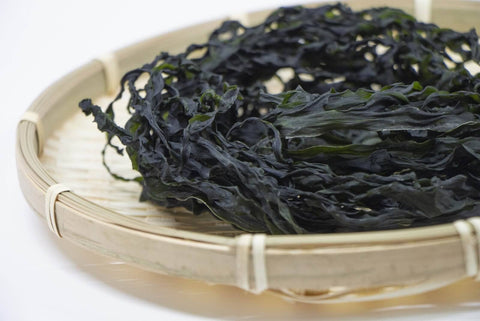
Hijiki: Total amount 60.7g ( Water-soluble dietary fiber: 22.5g , Insoluble dietary fiber: 38.2g)
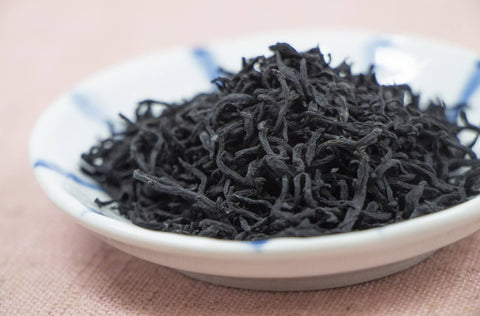
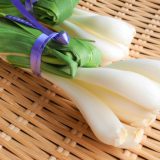
Vegetable / Fruit Ranking with High Water-Soluble Dietary Fiber
Three important things to get water-soluble dietary fiber
effectively and correctly 
(1) Ideally, take a 1: 2 balance of water-soluble dietary fiber and insoluble dietary fiber
② It is recommended to take soup or miso soup rather than raw vegetables

③ Don't be bound by the content of water-soluble dietary fiber! 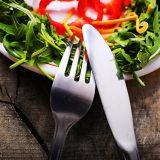
Don't be a follower of ingredients! Correct nutrition to prevent illness
And the other is The meaning of meal is not only nutrition but also enjoyment of deliciousness .
Conclusion

